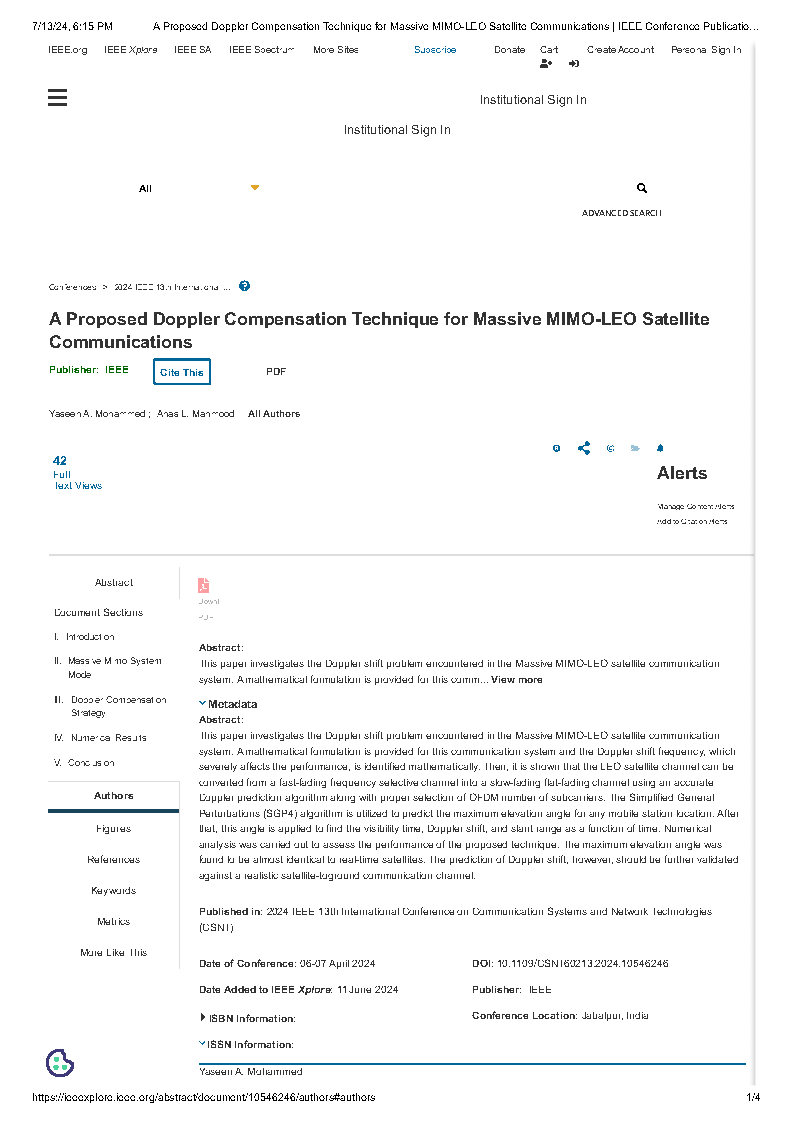Visitors: 21651239 Views
Done By: Electronic and Communications Engineering Department
Post Date: 2024-07-13
Last Browse: 2025-04-26

The academic staff
(Assist. Prof. Dr. Anas Latif Mahmoud) in cooperation with (Engineer Yassin
Ayman Muhammad / Master’s student in the research) from the Department of
Electronic and Communications Engineering / College of Engineering / Al-Nahrain
University published a new joint research entitled
A Proposed Doppler Compensation
Technique for Massive MIMO-LEO Satellite Communications
At the global conference
2023 IEEE 13th International Conference on
Communication Systems and Network Technologies (CSNT)
Held in India, published by IEEE, and indexed in the Scopus
database.
Search
link within the IEEE Xplore container
This paper investigates the Doppler shift problem
encountered in the Massive MIMO-LEO satellite communication system. A
mathematical formulation is provided for this communication system and the
Doppler shift frequency, which severely affects the performance, is identified
mathematically. Then, it is shown that the LEO satellite channel can be
converted from a fast-fading frequency selective channel into a slow-fading
flat-fading channel using an accurate Doppler prediction algorithm along with
proper selection of OFDM number of subcarriers. The Simplified General
Perturbations (SGP4) algorithm is utilized to predict the maximum elevation
angle for any mobile station location. After that, this angle is applied to
find the visibility time, Doppler shift, and slant range as a function of time.
Numerical analysis was carried out to assess the performance of the proposed
technique. The maximum elevation angle was found to be almost identical to
real-time satellites. The prediction of Doppler shift, however, should be
further validated against a realistic satellite-to ground communication channel.